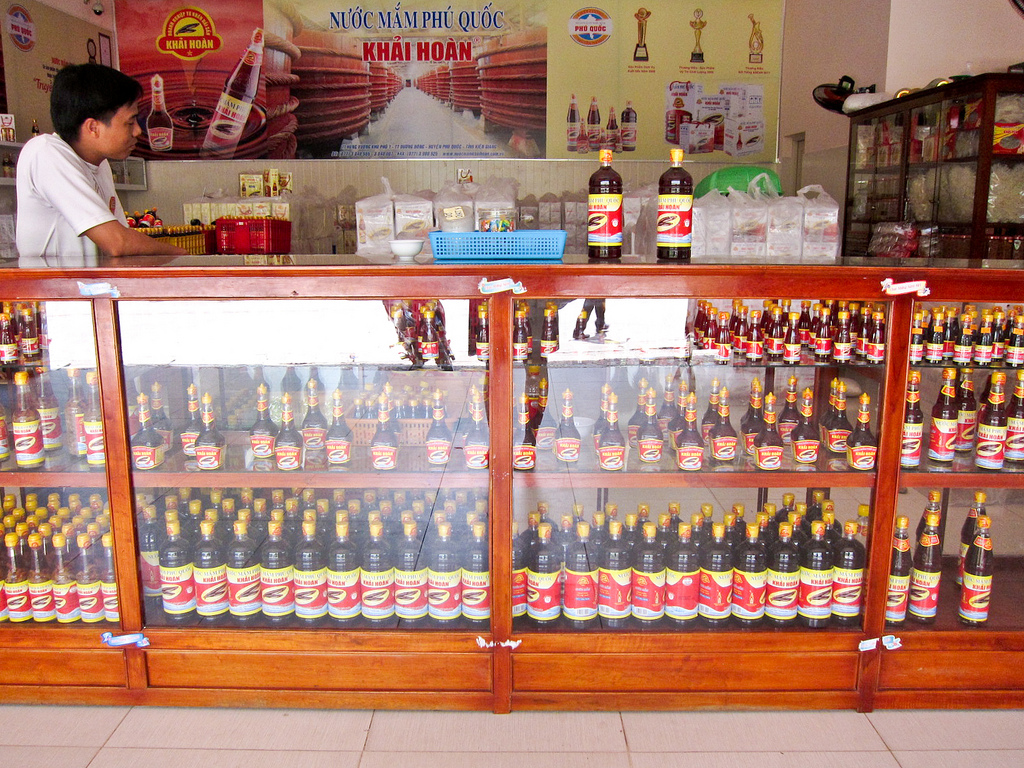Picking fish sauce: a primer
The care and keeping of fish sauce: a 101.

Recipe type: Basics
Cuisine: Vietnamese
Preparation time: N/A
Cooking time: N/A
Total time: N/A
Serves: N/A
When does nước mắm/fish sauce matter? This is the basic ingredient of Vietnamese cuisine, so the answer is, most of the time ^^
However, there are moments when it matters more. Broadly speaking (I’ll do the simple version, and my knowledge of Vietnamese cuisine is *far* from extensive), you use fish sauce as an ingredient when cooking, and as a main ingredient in some dipping sauces (nước chấm; my family doesn’t differentiate and uses “nước mắm” as a way to refer to dipping sauces). When cooking, the quality doesn’t matter so much, because it’s mixed with all sorts of things and is mainly used for that umami/salty flavour. However, dipping sauces, usually one of the stars of the show with meals like gỏi cuốn or bò bùn, are much much more unforgiving, and if you can get high quality, then do so. I know people tend to have two fish sauce bottles, one for cooking and one for table serving. We don’t do it because we don’t have that much consumption of fish sauce, but it’s not a bad idea.
Here’s a (non-exhaustive) primer on what to look for:
Colour. Good fish sauce is dark amber, a colour a bit like caramel (it darkens over time, and since I never saw anything straight from the producer it’s possible all the stuff I’m used to already is darkened by age). It’s also not meant to be stinky, but most people unused to it think it’s stinky anyway, so I’m not sure how good an indication that is! Ingredients should be fish, salt and water and nothing more (Vietnamese fish sauce is most often made from anchovy/cá cơm).
Look for the words “nhĩ/nhỉ/kéo lù/cốt”: they mean first pressing. Fish sauce is a bit like oil: the first pressing is more tasty and more intense than the subsequent ones. See here for a more complete description of the process (it’s Thai fish sauce, but it’s a very similar recipe).
Know the words for quality: “thượng hạng” (first class), “hảo hạng” (high grade), “siêu hạng” (super grade, a little less than either of the previous ones insofar as I know? At least judging by the two bottles of fish sauce I have at home). Do NOT confuse with “thường” (note the slightly different accent), which means “ordinary”. Pretty sure there’s other words for quality, but that’s all I was able to find with a quick look on my shelves. I’ll edit the post if I find more words.
Location, location: nước mắm from Phú Quốc (an island off the coast of Vietnam) has a (justified) reputation as being high quality. There’s not much production from Phú Quốc though, so do be sure that you get something genuinely from there and not just an enterprising brand that slapped the name on it.
The other important thing is that every country in Southeast Asia (and beyond) has a slightly different idea of what constitutes good fish sauce, and substituting one for the other doesn’t always work. This is particularly unforgiving with dipping sauces (my sister still remembers the day we tried to mix a dipping sauce with Squid brand. Though I’ve heard from Vietnamese from the diaspora who had no issue with Squid brand or Thai fish sauces, so it’s clearly a matter of YMMV). Basically, if cooking Vietnamese food and able to get Vietnamese fish sauce, go for it.
Nitrogen rate: fish sauce tends to be graded by nitrogen content. If you see a number in degrees (like 25°/35°), this is the nitrogen content of the fish sauce. The higher it is, the more salty and intense the fish sauce is. Higher doesn’t always mean better: for some uses (mild dressings for instance), my grandma prefers 25°. I’m not an expert on this, so I basically pick up a bottle of 35° from my local Asian dealer. If there’s no indication and you’re in a Western country (US and France certainly, I’m a little less sure about other Western countries), then the likelihood is that it’s 20-25°.
The other important thing to know about nitrogen content, especially for dipping sauces: if a recipe is meant for one nitrogen content and you have another one, then you’ll need to do a volume conversion. For instance, if a recipe is meant for 20° and you have 35°, I highly recommend you divide required amounts of fish sauce by 35/20 before starting out, or your dipping sauce is going to be a little funky (dipping sauces, especially nước chấm, are a highly personal/family secret kind of thing, so “funky” varies a lot depending on who does the mixing and the tasting). I should do this for cooking as well, but I confess I’m a bit lazy and don’t mind more intense fishiness in my food ^^
Storage: store away from light in a dry, air tight place (i.e. the glass bottle it came in in a cupboard, for instance). Good fish sauce keeps pretty much forever, though it definitely can lose some punch (I have a very old bottle of fish sauce from 2007 that we still dip into for cooking–the salt has crystallised at the bottom, but otherwise it’s fine. Probably past its peak taste, though, and I wouldn’t use it for dipping sauces).
That’s all I had–if anyone wants to chime in with extra comments/recs/other cuisines, I’m all ears (also quite happy to take questions, though again, it’s not my specialty, just stuff I learnt on the fly…)
(picture courtesy of Jennifer Yin on flickr. Used under a Creative Commons Attribution NonCommercial Generic 2.0 license).